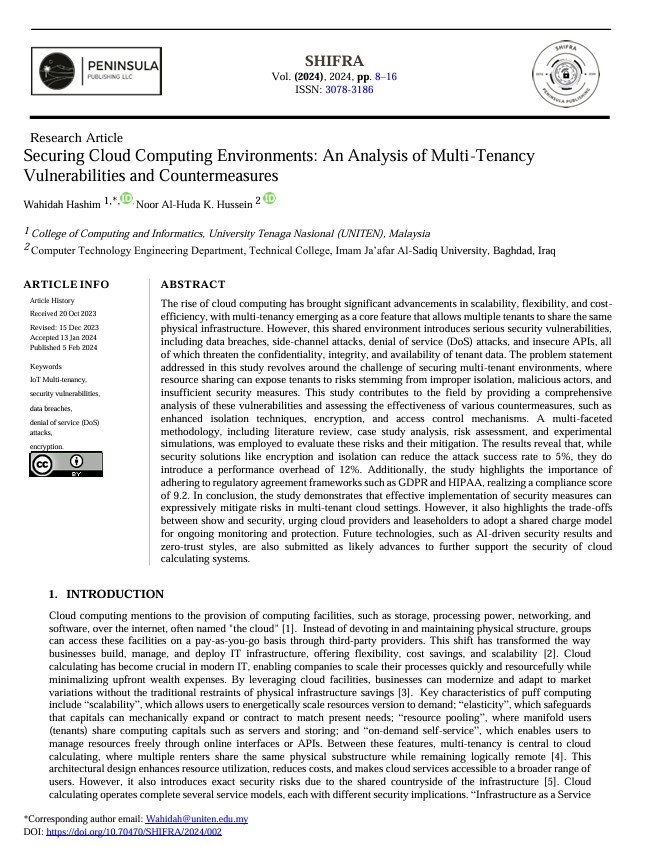Securing Cloud Computing Environments: An Analysis of Multi-Tenancy Vulnerabilities and Countermeasures
Main Article Content
Abstract
The rise of cloud computing has brought significant advancements in scalability, flexibility, and cost-efficiency, with multi-tenancy emerging as a core feature that allows multiple tenants to share the same physical infrastructure. However, this shared environment introduces serious security vulnerabilities, including data breaches, side-channel attacks, denial of service (DoS) attacks, and insecure APIs, all of which threaten the confidentiality, integrity, and availability of tenant data. The problem statement addressed in this study revolves around the challenge of securing multi-tenant environments, where resource sharing can expose tenants to risks stemming from improper isolation, malicious actors, and insufficient security measures. This study contributes to the field by providing a comprehensive analysis of these vulnerabilities and assessing the effectiveness of various countermeasures, such as enhanced isolation techniques, encryption, and access control mechanisms. A multi-faceted methodology, including literature review, case study analysis, risk assessment, and experimental simulations, was employed to evaluate these risks and their mitigation. The results reveal that, while security solutions like encryption and isolation can reduce the attack success rate to 5%, they do introduce a performance overhead of 12%. Additionally, the study highlights the importance of adhering to regulatory agreement frameworks such as GDPR and HIPAA, realizing a compliance score of 9.2. In conclusion, the study demonstrates that effective implementation of security measures can expressively mitigate risks in multi-tenant cloud settings. However, it also highlights the trade-offs between show and security, urging cloud providers and leaseholders to adopt a shared charge model for ongoing monitoring and protection. Future technologies, such as AI-driven security results and zero-trust styles, are also submitted as likely advances to further support the security of cloud calculating systems.
Article Details

This work is licensed under a Creative Commons Attribution 4.0 International License.
